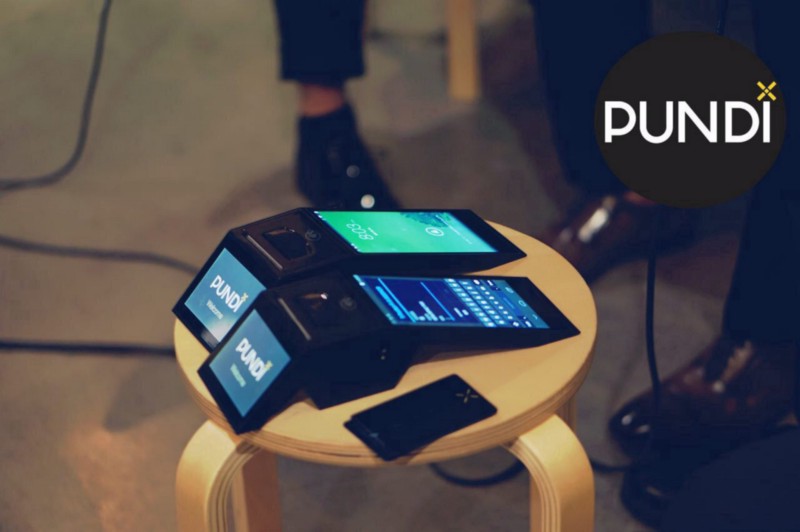One of the main problems facing all cryptocurrencies that aspire to be an everyday form of money is merchant adoption. It’s a chicken-and-egg problem of stores not feeling too motivated to accept cryptocurrencies if no one is going to buy anything with it, and consumers not seeing much advantage in using cryptocurrencies over traditional money if no store accepts them.
Wallets for consumers are not so complicated, so any person who has cryptocurrency and is motivated to carry it around for spending can simply download an app for their phone and be ready to go. So one side of the chicken-and-egg problem is largely held back only by a lack of interest. With more stores offering cryptocurrency purchases, that side of the problem might resolve on its own.
Stores, however, have more complicated considerations. They need to be able to attach specific sales events to their stock or services, they need to produce records for tax purposes, they need systems that can integrate with their existing business systems, they need to have interfaces easy enough for both staff and customers to access, and there are more considerations. Creating a point of sale system that can drop into the existing framework a store has established is a lot harder than simply downloading an app.
With many stores also not seeing the benefit of cryptocurrencies, and a lot of potential risk in terms of volatility, an appealing solution has to be so easy to set up that it can almost drop in without barely any setup. Only if a system can transition into operation so smoothly that it does not risk disrupting any other processes, so that stores can view cryptocurrency adoption as merely an option to add and not any kind of change to their business, then cryptocurrency adoption could potentially flourish among merchants.
What Does Pundi X Do?
Although they started with a mobile wallet application, the real thrust of Pundi X is a hardware Point-of-Sale, or POS, system for accepting cryptocurrency. They currently have a machine that sits on top of a counter, called XPOS, with two screens: one for the merchant and one facing the customer. It has an RFID chip, it can print receipts, and it displays QR codes for people to pay using their wallet apps.

Pundi X is also issuing a card that can store cryptocurrency amounts. It’s the same size and shape as a credit card, so it is familiar in form and function to people who are new to cryptocurrency. The card is called the XPASS, and there are actually two cards that come in a set. One contains private key information for making withdrawals and deposits on and off the cards. The other is for everyday use, and can only be used for making purchases.
In the future, Pundi X plans to develop a smaller, hand-held version of its XPOS device, called the XPS Handy, presumably for servers in restaurants or other staff who need to execute purchases around the store, not just at the cash register. They also have a larger XPOS Desk, which would be for self checkout situations, which are increasingly being utilized in grocery stores and other retail businesses.
Pundi X is decidedly a hardware company. But they do have a back-end as well, involving their own version of Android v7, which is an environment in which developers can create apps for XPOS devices to meet specific retailer needs. They also have a token, PXS, which exists to manage transactions on the XPOS network.
However, they do not have any specific blockchain solution for managing stock or supply chain. Their focus is entirely on the customer facing end of making it possible for consumers to make purchases with cryptocurrency.
History of Pundi X
Pundi X originates in Indonesia, and while cryptocurrency exchanges are permitted, cryptocurrency payments for goods and services are currently banned by the government. Pundi X is able to deploy their hardware without breaking the law because their POS system defaults to accepting payments from non-cryptocurrency systems, like bank cards and Apple Pay.
However, they are betting heavily on the belief that the Indonesian government will lift its ban within a few years, at which time the cryptocurrency option can be enabled. In such an event, Pundi X will have a large network of pre-installed systems ready to capitalize on the Indonesian market.
In the meantime, they’re planning to expand elsewhere in the Asian market over the next 3 years, specifically Thailand, Singapore, Malaysia, and Japan, and then move into American and European markets. They plan to have upwards of 200,000 devices installed in that time.
The Pundi X Team
The About page of Pundi X only shows their 5 senior management members, but they claim to have 150 staff members around the world, half of which they say are focused on research and development.
A list of advisors can be found elsewhere, where a heavy emphasis on a local Indonesian network is revealed. Pundi X also has partnerships with a variety of tokens and POS systems, such as Qtum, Stellar, Chynge, and UTRUST.
Competitors and Challenges
A significant challenge for Pundi X is that just about any device with a screen can display a QR code, and just about any phone with an RFID chip can be used to transmit a transaction. It is already possible to buy a cheap USB device that will sit on a counter and communicate with an RFID chip, so it would seem the hardware aspect of executing a cryptocurrency transaction is already available.
Accepting cryptocurrency in a store is much more about the backend systems organizing received data into the flow of existing business processes. To that end, Pundi X may be able to leverage their expertise in building POS systems, but if they make their hardware inseparable from their other services, they might be at risk of losing out to software companies using existing hardware, who could potentially deploy more easily and for cheaper.
How to Purchase and Store PXS
The Pundi X token is called PXS, and people using the Pundi XPOS system must use at least some amount of PXS in order to facilitate transactions. It can also be used as “gas” to pay for transaction fees using other cryptocurrencies.
While it is not a security, its function as a currency token to pay for services seems somewhat perfunctory, as it is scarcely mentioned in Pundi X documentation. Issuing PXS did help Pundi X raise US$35 million in their ICO in January 2018, and that was probably the main driving purpose for its existence.
They do have a somewhat complicated proposal for the total supply. The total supply will be finalized after January 2021, and they estimate a maximum possible total supply will be the total circulating supply at that time, multiplied by 3.333. This means it is not possible at the moment to specify exactly how many PXS will exist, but there will eventually come a time when the supply is capped.
PXS is an ERC-20 token, and it can be stored on any compatible wallet. It is available for purchase on selected exchanges such as Binance, LAToken, and Bit-Z.
Conclusion
Any advocate of cryptocurrency will readily admit that merchant adoption is a major problem faced by all aspiring blockchain-based currencies.
The challenge Pundi X faces is not so much with regards to the functionality or efficacy of their system, though they will have to work hard to justify their hardware. The challenge is more to do with convincing merchants that cryptocurrency adoption is something that will help drive sales. While every cryptocurrency advocate would love to live in a world where cryptocurrencies were used with ease everywhere, it’s less clear that the rest of the world agrees.
It’s not the case that there is resistance to the idea of cryptocurrency among merchants, it’s a matter of apathy. Exactly how will it make a store more profitable to make cryptocurrency an option for consumers, and is that upside of cryptocurrency use worth the downside of learning how to use it and implementing the hardware and procedures?
This brings us right back to the chicken-and-egg problem, where stores would jump at using cryptocurrencies if consumers were constantly asking for their acceptance. But the consumers are not there yet, so why should merchants make the first step?
Whether or not Pundi X’s devices or systems work as well as can be hoped will be discovered through their use and adoption. Assuming the best, it seems their success will be somewhat tied to how the average consumer and store feels about cryptocurrency. It’s less likely that Pundi X will drive cryptocurrency adoption as much as reflect it. If you believe in the inevitable rise of cryptocurrencies, then their future could potentially be very bright.
To find out more about Pundi X, see their website and whitepaper. To join in on the discussion, join their Telegram. To keep up to date, follow their Twitter feed and their blog.
Related: Cryptobanks: The Key to Widespread Blockchain Adoption?

